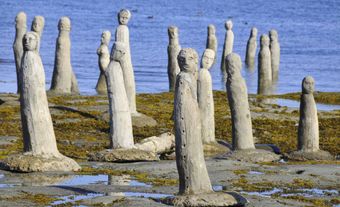Cape North is the northern promontory on Cape Breton Island. Its bald, rocky headland rises abruptly from the shoreline to heights of over 300 m. Nearby Sugarloaf Mountain is one of the sites claimed to have been John Cabot's landfall in 1497. The currents around the cape are generally directed out of the Gulf of St Lawrence as part of the Cape Breton Current. However, violent local storms with sustained easterly winds can create opposing flow near the coast and strong current rips. Cape North has long been an important centre for communications. The first undersea telegraph cable from Newfoundland came ashore here in 1856 and was used until 1867, when it was replaced by the North Sydney-Placentia line.
-
- MLA 8TH EDITION
- Smith, P.c.. "Cape North". The Canadian Encyclopedia, 17 October 2014, Historica Canada. www.thecanadianencyclopedia.ca/en/article/cape-north. Accessed 26 July 2024.
- Copy
-
- APA 6TH EDITION
- Smith, P. (2014). Cape North. In The Canadian Encyclopedia. Retrieved from https://www.thecanadianencyclopedia.ca/en/article/cape-north
- Copy
-
- CHICAGO 17TH EDITION
- Smith, P.c.. "Cape North." The Canadian Encyclopedia. Historica Canada. Article published February 06, 2006; Last Edited October 17, 2014.
- Copy
-
- TURABIAN 8TH EDITION
- The Canadian Encyclopedia, s.v. "Cape North," by P.c. Smith, Accessed July 26, 2024, https://www.thecanadianencyclopedia.ca/en/article/cape-north
- Copy
Thank you for your submission
Our team will be reviewing your submission
and get back to you with any further questions.
Thanks for contributing to The Canadian Encyclopedia.
CloseArticle
Cape North
Article by P.c. Smith
Published Online February 6, 2006
Last Edited October 17, 2014
Cape North is the northern promontory on Cape Breton Island.

 Share on Facebook
Share on Facebook Share on X
Share on X Share by Email
Share by Email Share on Google Classroom
Share on Google Classroom

